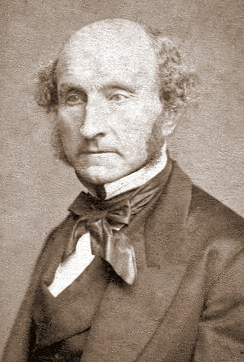Conspicuous consumption
Conspicuous consumption is a term introduced by the sociologist Thorstein Veblen in his book The Theory of the Leisure Class published in 1899. It refers to the spending of money on and the acquisition of luxury goods and services to publicly display economic power—either the buyer's income or the buyer's accumulated wealth. The concept is critical in the study of consumer behavior, social stratification, and economics, particularly under the scope of behavioral economics.
Overview[edit | edit source]
Conspicuous consumption goes beyond the basic needs of the consumer, focusing instead on the public display of wealth and social status. Veblen's theory posits that this type of consumption is a means for individuals to demonstrate their affluence or social status to others. It is often associated with the upper class but can be observed across various social strata, reflecting social and economic divisions within society.
Historical Context[edit | edit source]
The concept of conspicuous consumption has roots in the historical development of capitalist societies, where the accumulation and display of wealth became a means for individuals to differentiate themselves socially. In the 19th century, as industrialization increased the availability of goods and the wealth of certain classes, conspicuous consumption became more prevalent as a social and cultural practice.
Social and Economic Implications[edit | edit source]
Conspicuous consumption has significant social and economic implications. It influences consumer behavior, driving demand for luxury goods and services that are often unattainable for the average consumer. This can lead to economic disparities and reinforce social hierarchies based on wealth and consumption patterns. Additionally, it impacts the environment through the overconsumption of resources and the production of waste associated with luxury goods.
Criticism and Analysis[edit | edit source]
Critics of conspicuous consumption argue that it promotes materialism, unsustainable economic practices, and social divisions. It is also seen as a reflection of the individual's need for social recognition and status rather than genuine personal satisfaction. Scholars and economists continue to analyze conspicuous consumption, considering its implications for sustainable development, social equity, and consumer ethics.
See Also[edit | edit source]
Search WikiMD
Ad.Tired of being Overweight? Try W8MD's physician weight loss program.
Semaglutide (Ozempic / Wegovy and Tirzepatide (Mounjaro / Zepbound) available.
Advertise on WikiMD
|
WikiMD's Wellness Encyclopedia |
| Let Food Be Thy Medicine Medicine Thy Food - Hippocrates |
Translate this page: - East Asian
中文,
日本,
한국어,
South Asian
हिन्दी,
தமிழ்,
తెలుగు,
Urdu,
ಕನ್ನಡ,
Southeast Asian
Indonesian,
Vietnamese,
Thai,
မြန်မာဘာသာ,
বাংলা
European
español,
Deutsch,
français,
Greek,
português do Brasil,
polski,
română,
русский,
Nederlands,
norsk,
svenska,
suomi,
Italian
Middle Eastern & African
عربى,
Turkish,
Persian,
Hebrew,
Afrikaans,
isiZulu,
Kiswahili,
Other
Bulgarian,
Hungarian,
Czech,
Swedish,
മലയാളം,
मराठी,
ਪੰਜਾਬੀ,
ગુજરાતી,
Portuguese,
Ukrainian
Medical Disclaimer: WikiMD is not a substitute for professional medical advice. The information on WikiMD is provided as an information resource only, may be incorrect, outdated or misleading, and is not to be used or relied on for any diagnostic or treatment purposes. Please consult your health care provider before making any healthcare decisions or for guidance about a specific medical condition. WikiMD expressly disclaims responsibility, and shall have no liability, for any damages, loss, injury, or liability whatsoever suffered as a result of your reliance on the information contained in this site. By visiting this site you agree to the foregoing terms and conditions, which may from time to time be changed or supplemented by WikiMD. If you do not agree to the foregoing terms and conditions, you should not enter or use this site. See full disclaimer.
Credits:Most images are courtesy of Wikimedia commons, and templates, categories Wikipedia, licensed under CC BY SA or similar.
Contributors: Prab R. Tumpati, MD


